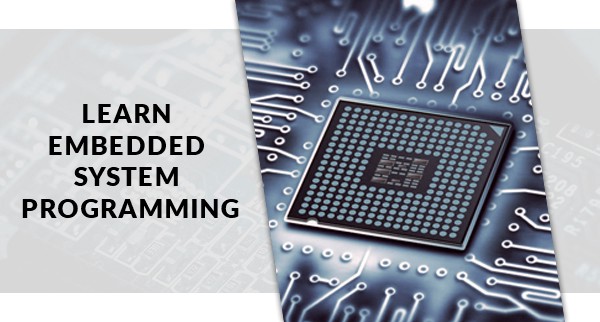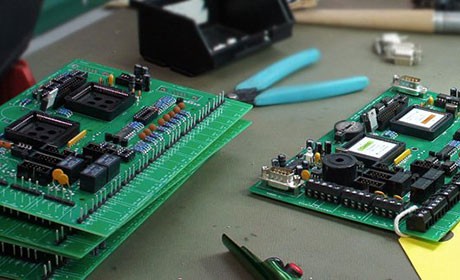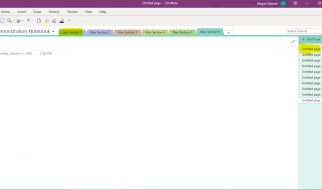 Teksun Lab ? Learn Embedded System Programming
Teksun Lab ? Learn Embedded System Programming
Hello Guys,Today I am going to explain all the important things for learning embedded system programming.
First know about Embedded Systems.
An embedded system is a computer system which is designed & developed within a larger mechanical or electrical system for performing particular tasks. Embedded system is a part of a complete device, it has microcontroller or microprocessor. Some examples of embedded systems are Digital Cameras, Phones and automotive systems are generally used today. If you want to know about why embedded systems are so important, first of all one needs to learn embedded system program then only one can build up embedded system project or look at real-life examples of an embedded system.
Here are 8 basic things that beginner need to know about embedded system programming before beginning their projects.
1.Select Programming Language:
The first step of learner is to choose the programming language. Also, you can check all the options available and then choose one from them according to your necessity.
Both high level and low level programming languages are using embedded system.
Both type of languages have their own advantage and weakness. Mostly, C language use for high level programming. When program is low level then use assembly language.
When system is complex and sophisticated then use low level programming languages. The low level programming language through user can control on the hardware and memory.
If you use small system then select high level programming language. The main benefit of high level programming language in small systems are easily understands and programs are readable and compact.
For a fresher, you can using C language for developing of embedded system.
2. Learn C/ C++ Programming Language
The second step of embedded system programming is to learn programming language such as C or C++ ? both are most commonly used language.
C programming language is easy to learn and good for beginners so embedded software development preferred this language.
Write the programs in C language are easy to debug and readable. The main benefit of this language is provide support for input and output devices and more efficient language.
Therefore it is necessary to start learn C language if you want to go for embedded system programming.
Learn basic programming constructs of C/C++. Know about variables, conditionals, loops, structures and functions etc.
3. Identify Perfect Microcontroller
The important part of embedded system are microcontroller and microprocessor. Therefore you should identify your microcontroller ? this third things is really important for embedded system programming.
A microcontroller is one kind of CPU of your embedded system. It has timers, counter such as CPU has RAM, ROM and other peripherals.
Arduino, PIC Microcontroller or 8051 Microcontroller are most commonly used microcontrollers.
First select a microcontroller, it?s depending upon the application. Also, it?s depends on hardware and software requirement.
4. Knowledge about Basic Electronics Devices
Fourth thing is really important for learning embedded system programming. If you have no idea about basic electronic device, it is not possible to design embedded system program. For a beginner you need to know about basic electronic devices.
Embedded system is not only writing program but also necessary to learn hardware with software.
If you want to learning basic electronic devices, the best idea is you can start with small project instead of reading the details of all kinds of devices. This small project through you can get the idea of basic terms like voltage, power, current, resistance etc.
After you know these basics, you can easily work with your components and embedded system programming more proficiently.
 Embedded System
Embedded System
5. Get the Basic Equipments and Tools
Start learning embedded system programming you will need some basic equipment other than microcontroller and hardware.Some basic equipment and tools are:- Circuit Boards- Batteries- Jumper Wires- Resistors- Soldiering iron and leds- Digital Multi ? Meter (DMM)- A hardware debugger/ JTAG adapter
6. Pick the Components & know about Datasheets
Choosing the right components is also main part of learning embedded system programming. It is essential things to select the best component suited for your application.
Each components are available in datasheets. All data regarding components are found in datasheet. Therefore you should learn how to read a datasheet.
Datasheets are really the guidebooks for electronic components. Most of the questions such as how to use components, what are the power requirements and what the specifications ? answered by datasheets.
7. Working on Mini Projects
For fresher, start working on some mini projects, it is the best method to learn practical.
Working on some mini projects will benefit you in getting familiar with the microcontroller and your components.
Also working with Microcontroller kits, it?s also helpful for fresher.
8. Using Simulation Tools
Simulation tool is also very useful in embedded system programming.
Simulation enables the software engineer to check for different conditions and to control parameters. It is much more valuable when working on big projects where you have smallest resources and furthermore where trying things after developing project is costly.
Final Note:If you follow all these steps and identify your task then you can start working on embedded system programming. Through these 8 steps you can get an idea that embedded system programming is quite different from regular programing. For embedded programming, you need to know about basic electronic devices, components, microcontrollers and programming languages.
Source: https://www.linkedin.com/pulse/learn-8-things-embedded-system-programming-vaishali-trivedi/?trackingId=X1vS4jAjQk4zUW5ZOKl7bA%3D%3D


